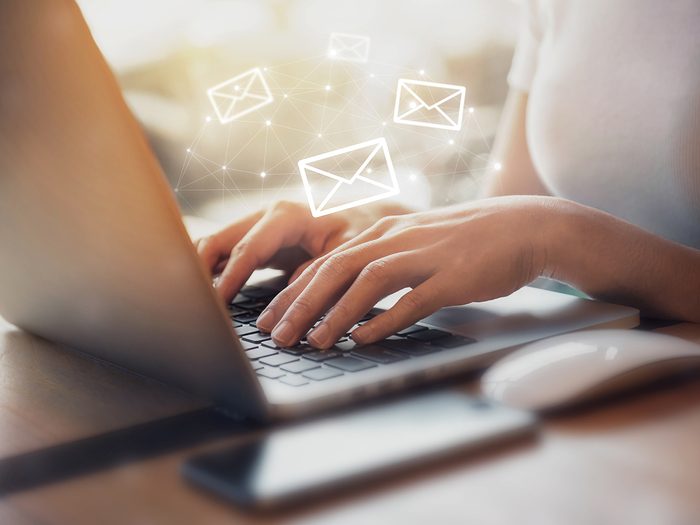
Think before you type
Email is a part of nearly every facet of modern life, so in addition to knowing everyday etiquette rules, top-notch email skills are essential, both in the personal and business spheres. Since you use email all the time, you might think you’ve got this covered. But similar to wedding etiquette, email etiquette rules can be very specialized and change quickly.
“Your emails are often the best—and sometimes only—demonstration of the quality of your communication skills,” says technology etiquette expert Michele L. Olivier, CEO of O&H Consulting. “Good email etiquette makes a good impression on others, is an important job skill, and reduces inbox anxiety for the sender and the receiver.”
Plus, proper email etiquette doesn’t just cover social, cultural, and professional aspects—it also encompasses some unique technological rules, says Toni Dupree, CEO of Etiquette & Style by Dupree. Because of the rapidly evolving nature of technology, what’s “good” and “bad” changes frequently.
Thankfully you don’t need to take an etiquette class to help you stay on top of the latest trends. We asked etiquette experts to share the most current rules so you can make the right impression every time you hit send.
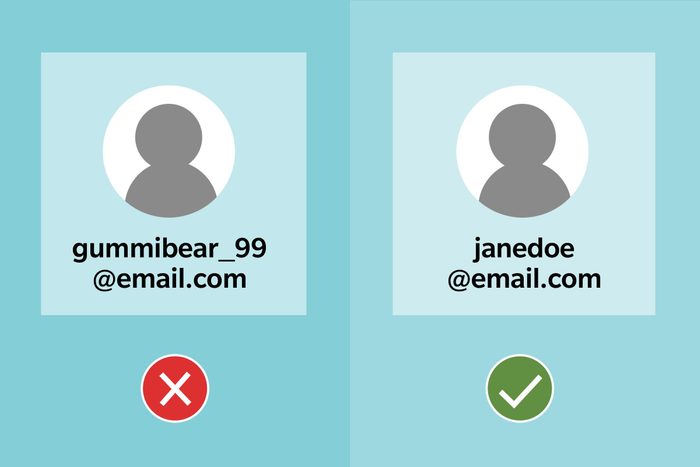
Use your name in your email address
[email protected] might have been funny back in the day, but it’s time to get rid of that old account. Email addresses are used for everything from making doctor’s appointments to applying for jobs, so adults need a normal, easy-to-understand email address. Stick to using a combination of your name and a few numbers when creating an email account. Don’t worry: You can always forward messages from your old accounts to your new one so you don’t have to start from scratch.
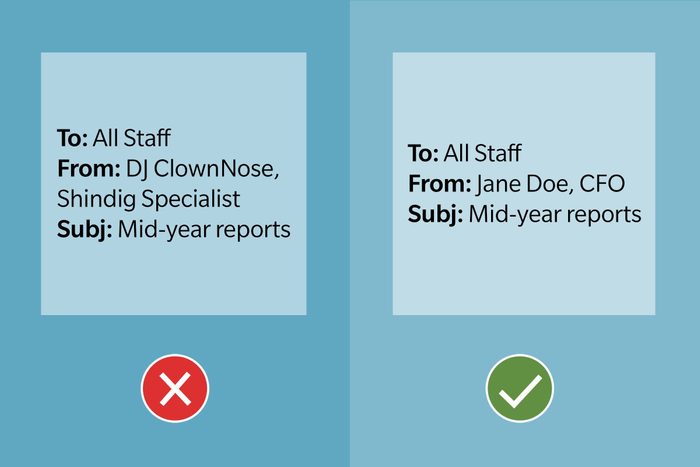
Separate business and personal emails
If you’re sending a professional email, make sure to use your business email account. Most companies will assign you an email address with their name on it but if they don’t, you can always create a separate email address strictly for business. This makes you look legitimate and professional and reduces the likelihood of embarrassing email mistakes. If you want to stick to one email account, at least sort work emails into a separate folder.
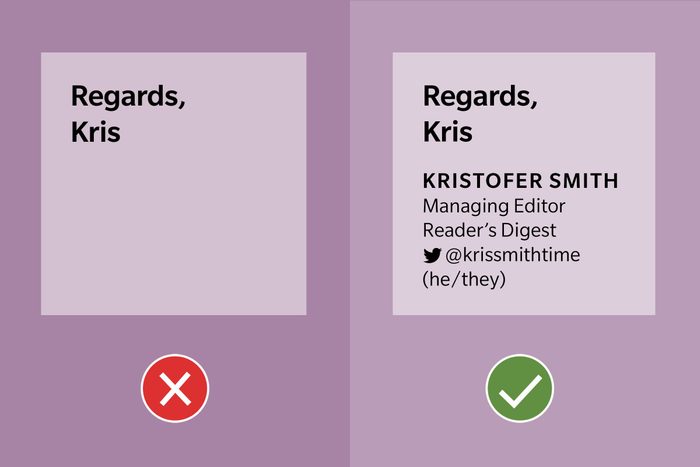
Craft a short, informative signature
One of the best tools for writing a good email is the signature that automatically appears at the bottom of every email you send, says Georgene Huang, CEO and cofounder of Fairygodboss, a career counseling service for women. Include your full name, job title (if using a business email), and your contact information, like a phone number, website, or social media account. Some people now also include their preferred pronouns.
(Related: I Need You to Know: Vacation Doesn’t Solve Burnout)
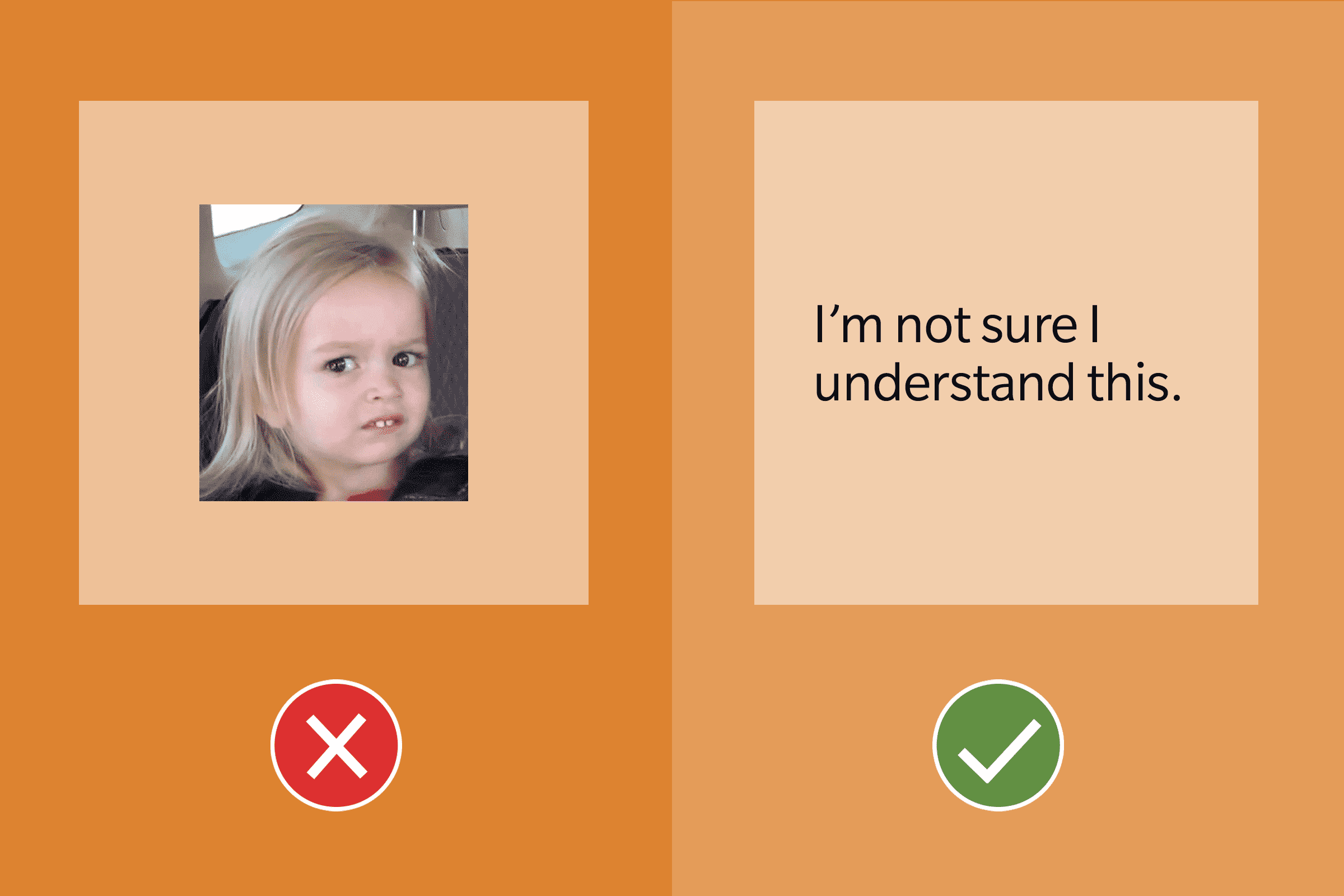
Save the funny GIFs for a text
Several years ago, fancy formatting in emails was all the rage, but these days, the rule is to keep it simple, especially in your signature. Nix the cutesy fonts, sparkly GIFs, multiple colors, and random quotes. Many people find them irritating, and some phone email programs aren’t able to import them properly, so your formatting may not come across correctly on mobile devices.
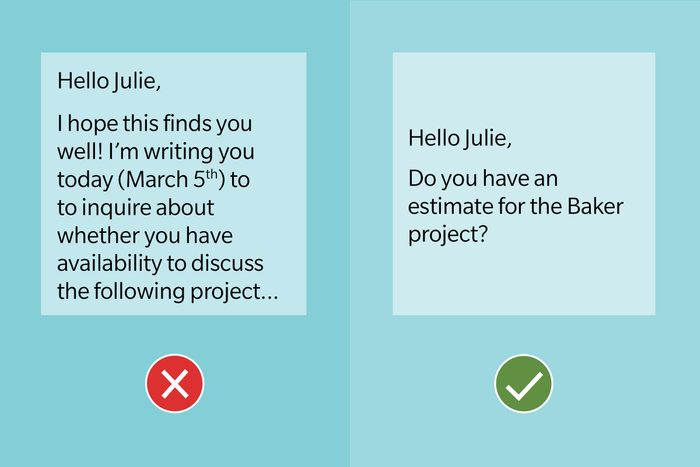
Get to the point right away
Generally speaking, email is an information-sharing tool, so most of the time, people prefer to read concise, to-the-point messages. There’s no need to fluff it up with unnecessary details or vague pleasantries, particularly if you’re sending a business email. You can be brief without being blunt or rude. According to email etiquette experts, it’s also helpful to include what you are asking the reader to do—whether it’s committing to a meeting, sending a file, or just listening—in the first paragraph so they know what to expect.
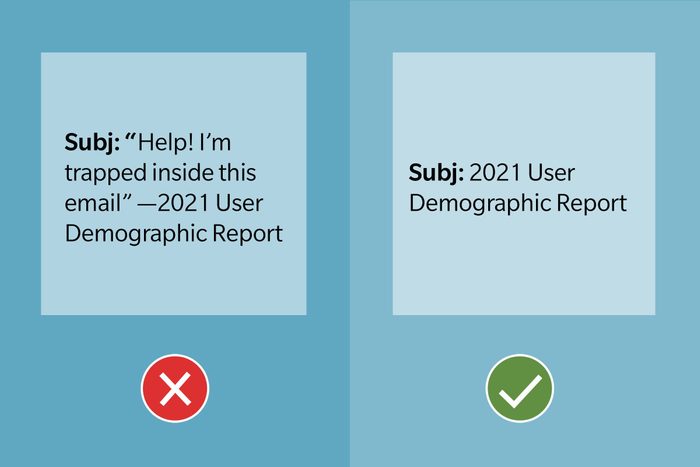
Use an accurate subject line
Many people preview their messages—meaning they see the subject line and the first line of the body of the email before deciding if they want to open it and read the whole thing. “Teaser” subject lines are frustrating and can come off as manipulative, so keep it brief but specific. It’s less important to be funny or eye-catching than it is to be informative and clear.
(Related: 5 Canadians with Disabilities on the Upsides of Working from Home)
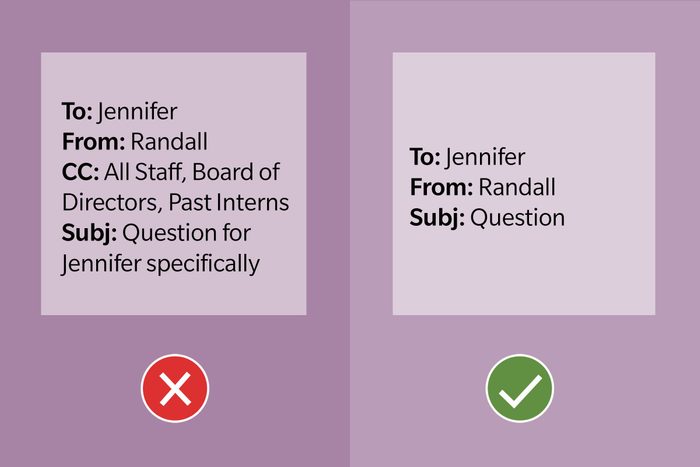
Only email people who need the information
“There’s no magic number for how many people should be included in an email, but make sure everyone you’re emailing actually needs to receive the message,” says Huang. You’d be surprised at how many people include others on email chains “just in case,” which can be annoying and create extra work. Just because you can email everyone in your contacts at once, it definitely doesn’t mean you should.
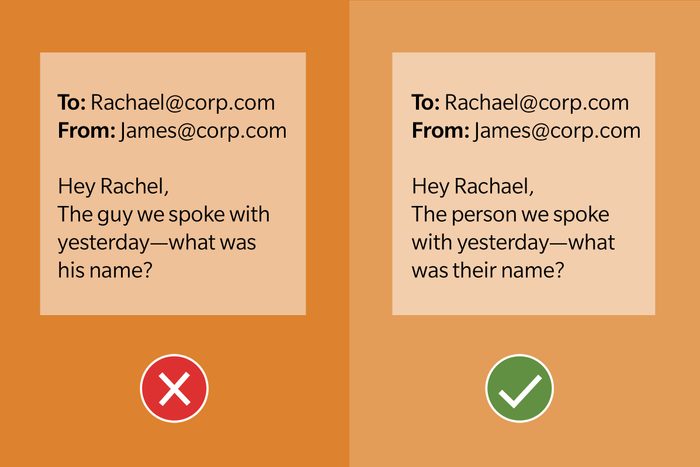
Don’t assume pronouns
A person’s identity is, well, very personal. And in this day and age, getting the personal details right is more important than ever. “Take the extra five seconds to make sure you are spelling the person’s name correctly,” says Olivier. “And don’t assume someone’s gender or pronouns. If you are unsure, just use their name.” Modern etiquette says it’s fine to ask someone what they prefer to be called, whether that’s a nickname or a gender-neutral pronoun. Abiding by their preferences shows respect.
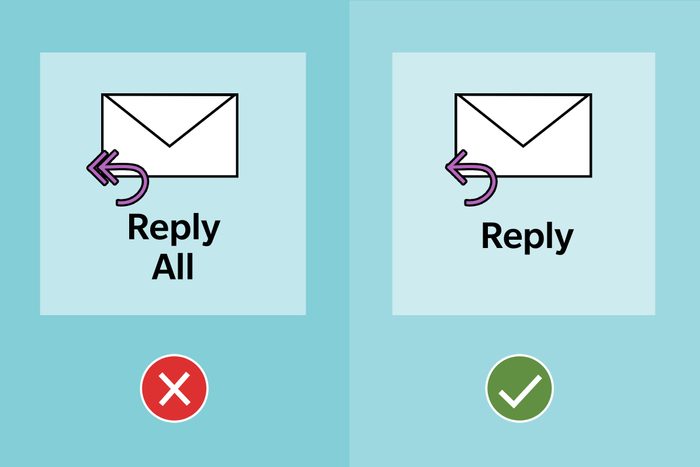
Think twice before hitting “reply all”
Email is often used as a way to deliver information to a large group of people at once. However, not everyone in the group will need to read every reply or question, and using the “reply all” feature unnecessarily can clog up inboxes. Before you reply to a mass email, consider who you are talking to and address the message only to them—more often than not, it’s just the person who sent the original email. If you’re worried about people missing vital information, a better solution is to gather it in a shared document that anyone can access and update.
(Related: How a Psychotherapist Does Her Job Through Zoom During Quarantine)
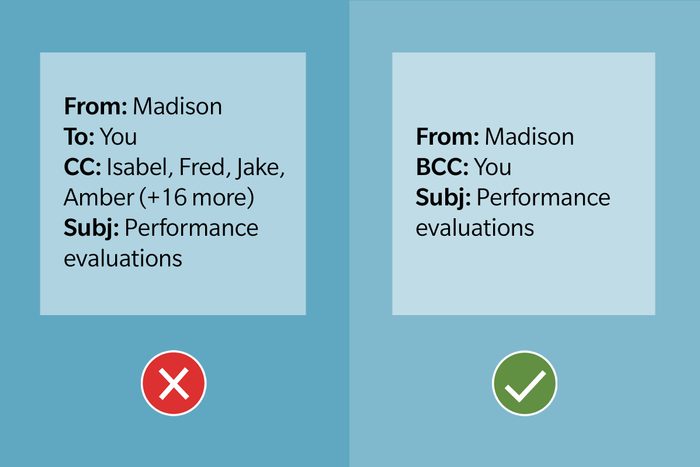
Use “bcc” for one-way communication or privacy
Here’s one way to avoid the “reply all” problem: When you are the sender, put your own email address in the “to” field and everyone else’s email addresses in the “bcc” field. BCC stands for “blind carbon copy” and means that any email addresses in that field will be hidden. Recipients will only be able to see your email. This is best for emails where you want to simply disseminate information and/or when you want to protect the privacy of the recipients.
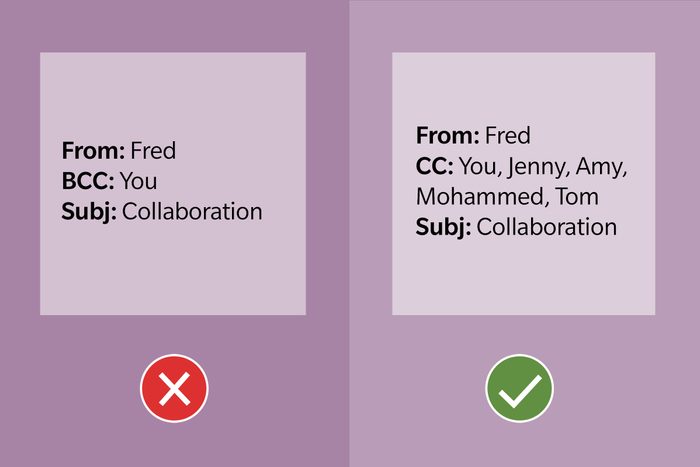
Use the “cc” field for groups that need to work together
CC stands for “carbon copy.” The difference between cc’ing and bcc’ing is that the recipients of a cc’ed email can see one another. Put emails in the cc field if you’d like a group of people to have everyone else’s contact information or to have a group discussion—like when planning a group event. In business settings, it’s also appropriate to cc someone to make sure they are aware of something but they’re not the primary audience intended for the message. Managers often ask to be cc’ed on important communications.
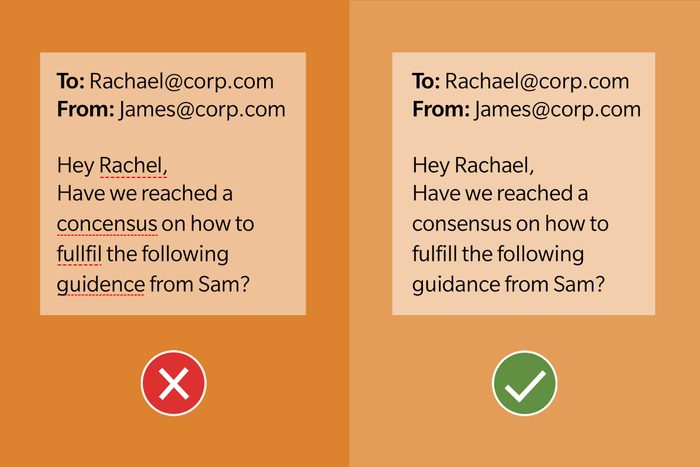
Use spell check and grammar check
Most email programs have built-in tools for checking spelling and grammar. These tools have become highly accurate and work for catching the most common mistakes. It’s worth the time to go through your email to correct any errors. Plus, giving it a quick read-through before sending can help you avoid other common errors, like forgetting to attach a document or spelling a person’s name wrong. “Most email errors could be prevented by proofreading it once before hitting send,” says Dupree.
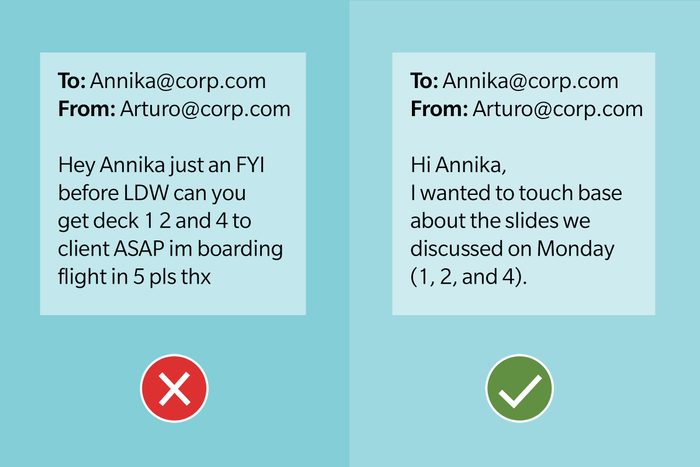
Write in complete sentences
Texting your best friend? You can abbreviate as much as you’d like, and punctuation is optional. Email, however, usually requires a bit more structure. Email often includes more information and longer blocks of text, so using complete sentences and punctuation makes it easier to read and understand. It’s also good business etiquette, particularly if your emails will be referenced later. Being concise doesn’t excuse you from proper writing rules.
(Related: The Pandemic Forced Employers to (Finally) Offer Workplace Accommodations)
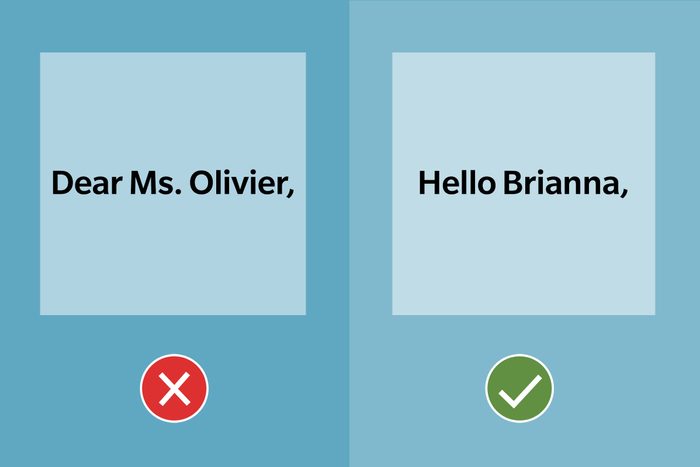
Drop the “Mr.” and “Mrs.”
Email used to be treated the same as any other business correspondence, but that’s no longer true. Now, being too formal can be off-putting or make you seem out of touch, says Olivier. “Write in a conversational tone,” she advises. “These days, most people prefer to be addressed by their first name. ‘Dear Ms. Olivier’ always makes me suspicious because it’s a common tactic used by scammers.” However, this is one area though where your particular society or business culture may have its own set of standards, and those should take precedence.
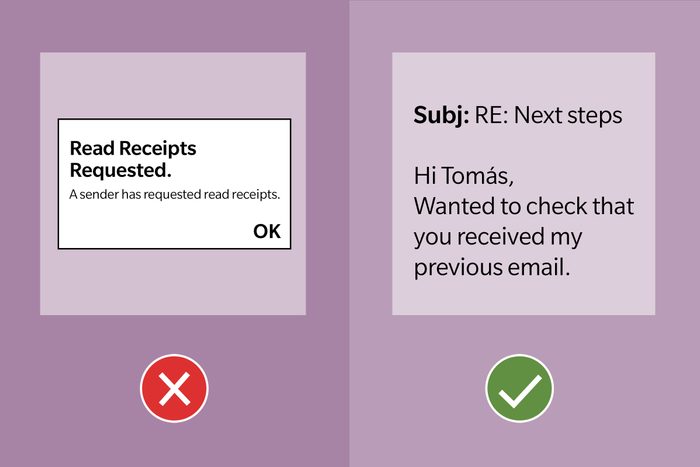
Do not send or ask for read receipts
A read receipt is a message or notification that shows if and when an email is opened. These clog up inboxes, and due to changes in the technology behind how emails are received, they’re not even very accurate anymore. If you really need to know if someone got your message, wait at least 24 hours and then send a polite follow-up note. Otherwise, it’s safe to assume they received it.
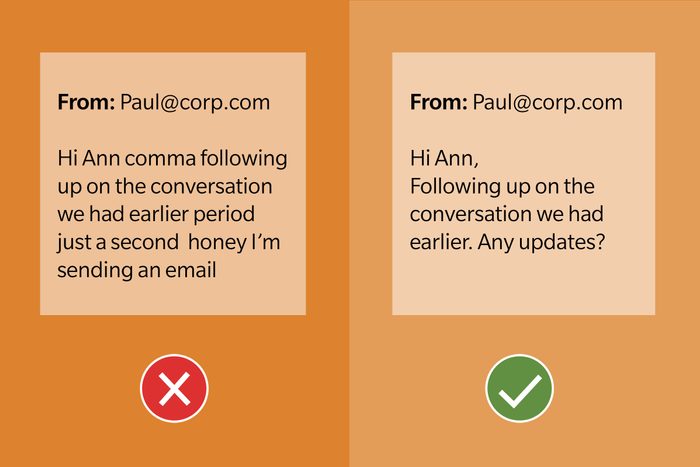
Use voice dictation very carefully
Many people send emails from their phones, and while that’s not a bad thing, it does increase the risk of errors—especially if you’re using the voice dictation tool. The computer may “hear” the wrong word, use the wrong spelling, or even occasionally completely change the whole meaning of your message. If you do use voice dictation, be sure to proofread carefully before hitting send.
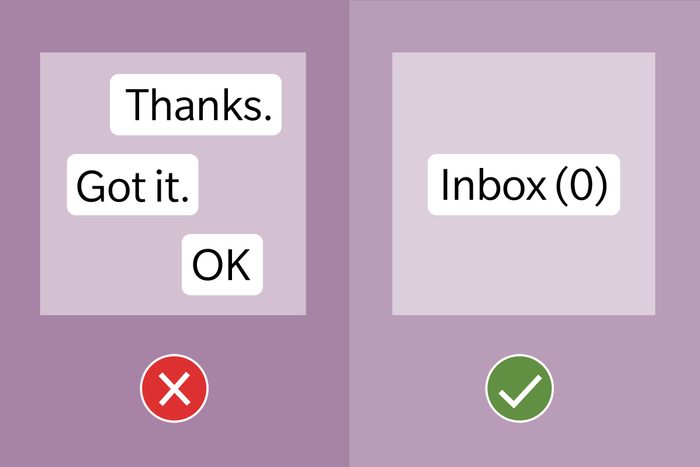
Skip the “thanks” replies
“If a reply isn’t necessary, then don’t send one,” says Olivier. “It’s that simple.” Replying “thanks” or “OK” doesn’t convey additional information and adds another email to an already full inbox. It is not considered rude in emails to skip the “thank you,” but you should still use it when speaking in person. The exception to this is if the sender asks you to confirm receipt or to acknowledge you received the information.
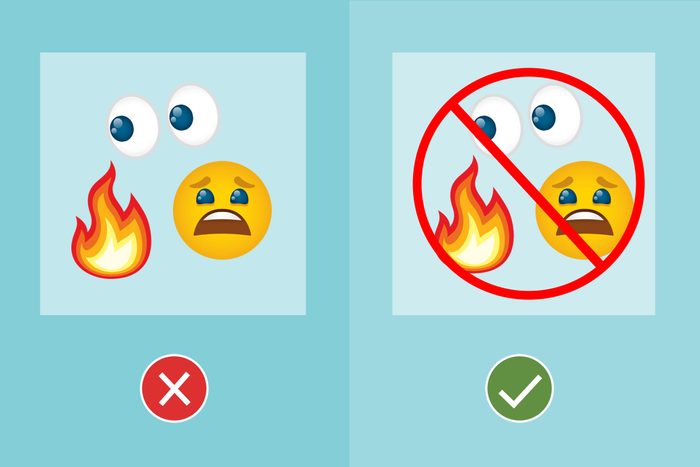
Be cautious with emojis and text speak
LOLs and smiley faces are common in texting, but in an email, those abbreviations and emojis can come across as informal at best and confusing at worst. However, this is one area where etiquette is changing rapidly, and in companies with a more casual corporate culture, they are totally fine, says Olivier. In fact, using some emojis can make you seem with it and on top of current trends. This comes down to understanding the corporate culture and the expectations of the person you are emailing, she notes.
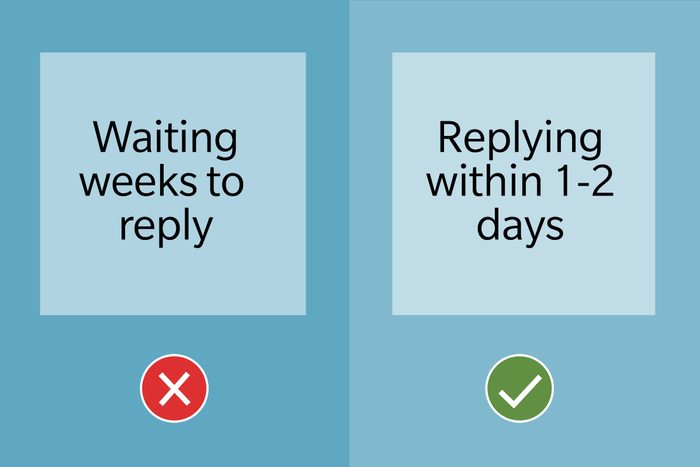
Reply within 24 to 48 hours
Nothing is worse than sending an important email and then hearing nothing back. Good email etiquette says that you should do your best to reply to every message within one to two days. If you can’t, send a short reply (or autoreply) stating that you are behind but will get back to them by a certain date or time. In many cases, it’s best to reply as soon as you read the email, if you have the information available. Putting it off until later takes mental energy, and it adds up until it feels overwhelming. Don’t wait until you have the “perfect” reply—people generally prefer a short but quick answer over a three-page dissertation anyhow.
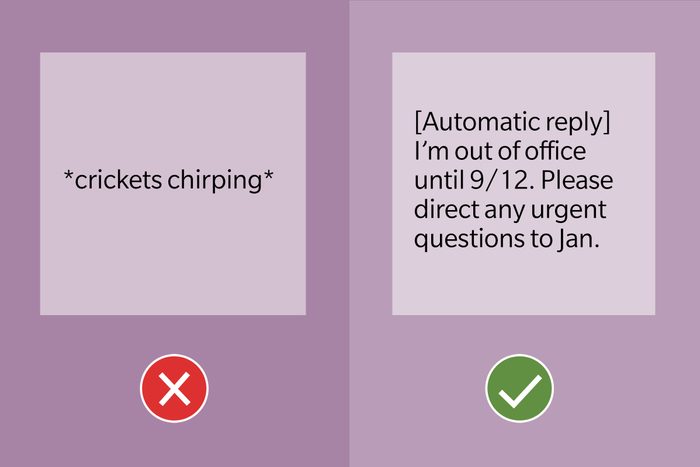
Set up an “away” message
If you’re out of the office or on vacation, set up an automatic “Out of office” or “Will be slow to respond” message to give people a heads-up that they shouldn’t expect a response from you right away. You don’t have to give out detailed information; stick to the basics, and let them know when they can expect a reply. While this is necessary for business communications, it’s not a bad idea to do it for personal accounts as well if you know you’ll be away from your email for an extended period of time—that way, loved ones won’t worry if they don’t get a speedy response.
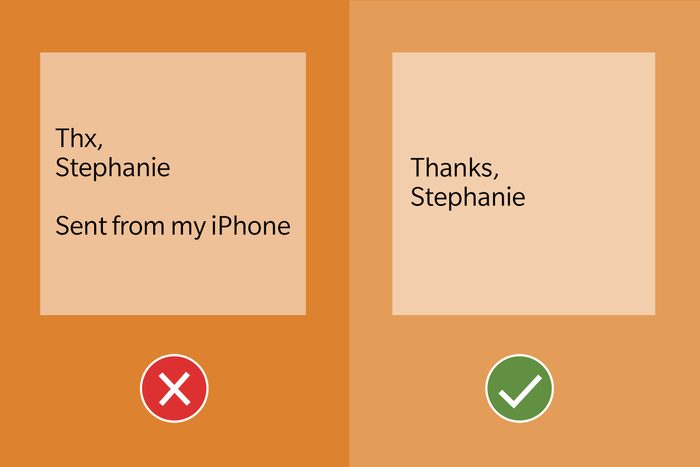
Don’t use the “sent from my iPhone” message
It’s not uncommon to see an email with a note at the bottom indicating the person sent the message from their mobile phone. It’s meant to apologize in advance for errors, poor grammar, bad formatting, or brevity, but it’s really just poor form, according to Olivier. “If you have to apologize in advance for something, don’t do it,” she says. If you are sending an email that is complex, take the time and do it properly from your computer. Either way, there is no need to share what device you’re using to send it.
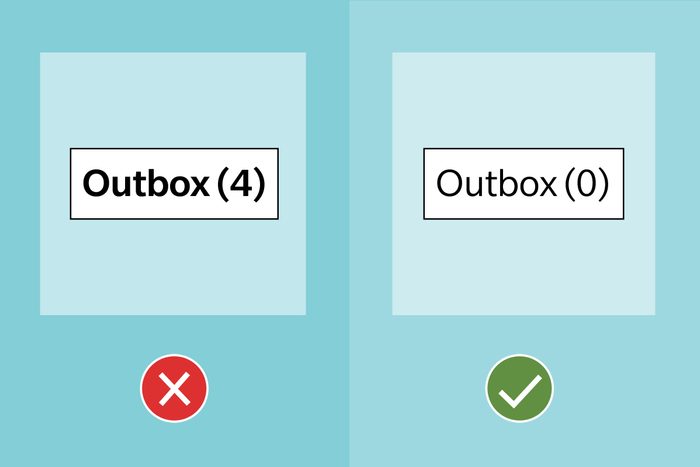
Check your outbox frequently
Some email programs use a queue to hold emails before sending them, and occasionally messages will get left in the queue and not get sent. However, “it got stuck in my outbox” is not a good excuse and is simply bad manners, says Olivier. Make it a habit to ensure all of your messages are sent.
(Related: How To Love Your Job: 6 Tips For Becoming Happier At Work)
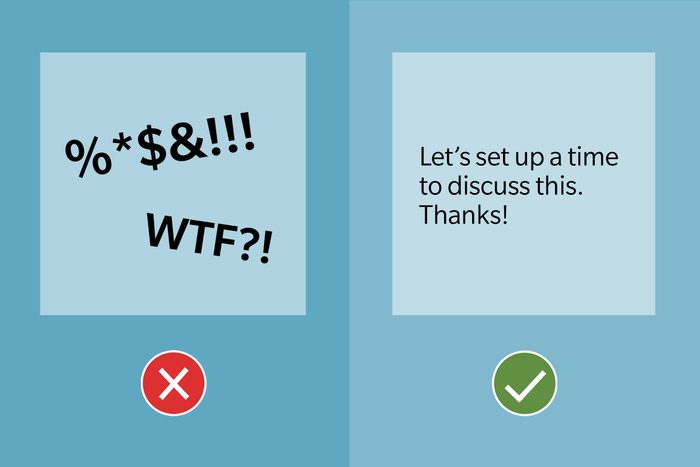
If you wouldn’t say it to their face, don’t type it
The Internet is forever. Even emails you think have been deleted can generally be found again. This means you should practice good social and business etiquette in every email you send. Use clear communication and a kind tone, and avoid name-calling, sexual pictures or text, accusations, or other faux pas. A good rule of thumb is if you wouldn’t want your grandmother to read it, then don’t write it. Need more help?
